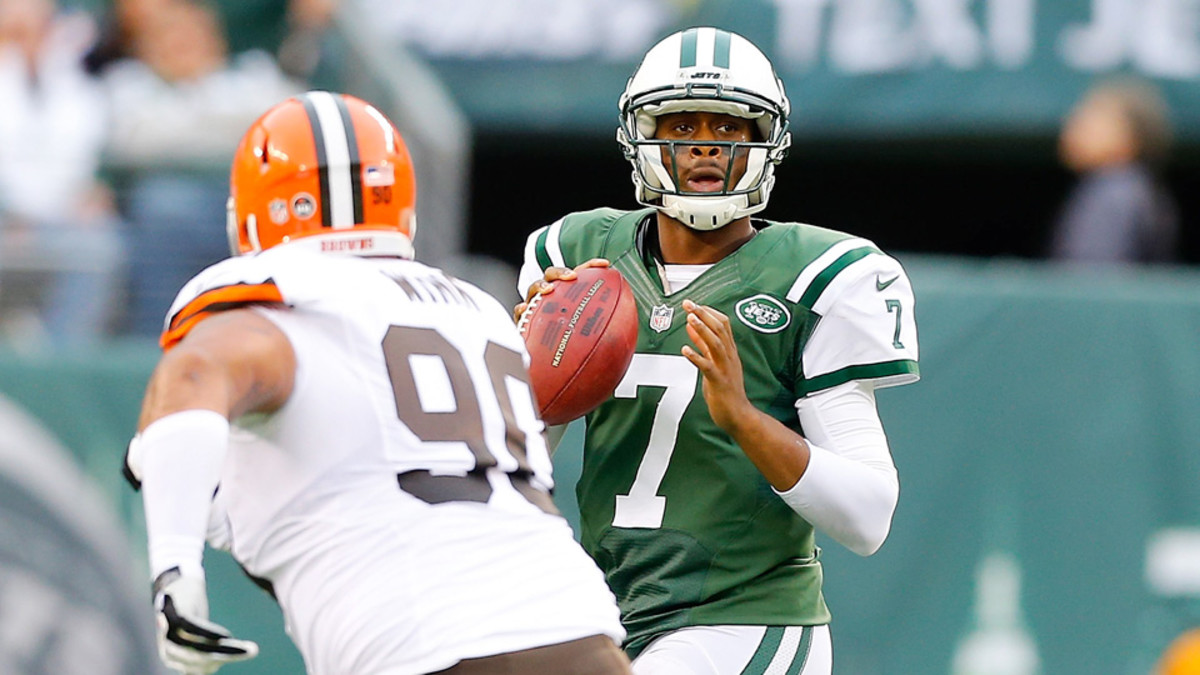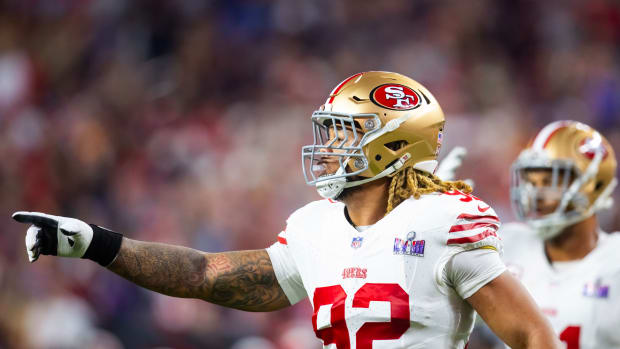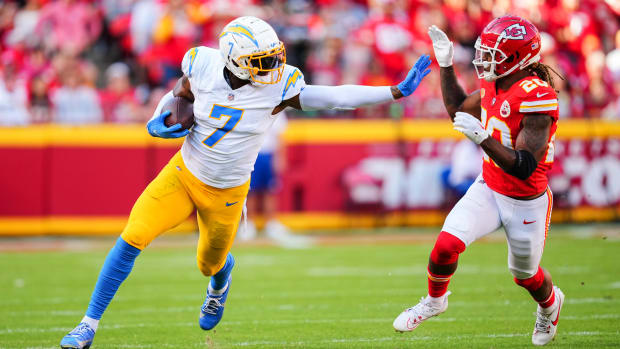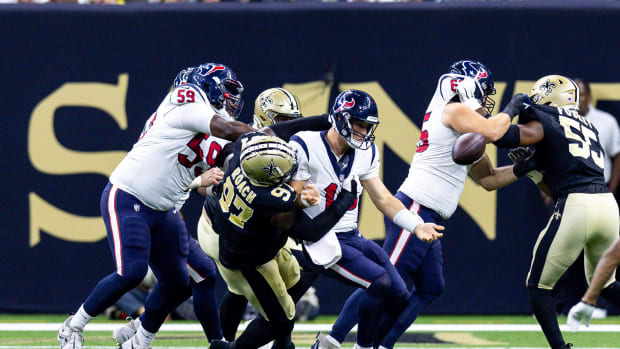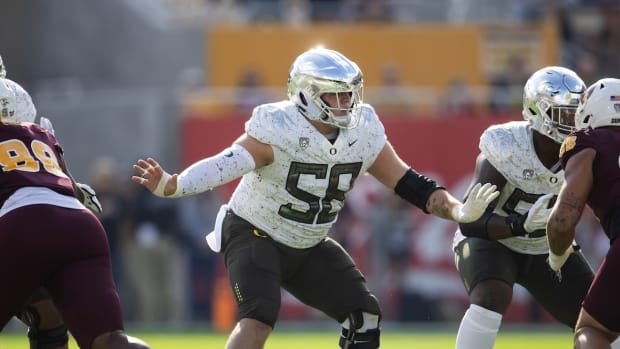Offseason Report Card: New York Jets
With the flurry of NFL offseason action nearly in the books, Chris Burke and Doug Farrar take stock of every team’s offseason. Find all our Offseason Report Cards here.
In Rex Ryan’s first two seasons as head coach, the New York Jets went to two AFC championship games and established a toughness and multiplicity on defense that was the envy of the league. In the three seasons since, Ryan’s Jets have not been able to crack the .500 barrier, mostly because of a series of moribound offenses that couldn’t survive Mark Sanchez’s mediocrity and whatever it was that Tim Tebow was expected to do. While Ryan’s defenses still shine (it could be argued that the current iteration has the best front seven to date), the Jets’ inability to hit on a quarterback has set them far behind in a league that is more and more about the passing game — unless you’re the Seahawks or 49ers and have everything else on the ball. The Jets once subscribed to and personified that ideal, but now, they’re merely a half-built team with issues where their assets should be.
Over the last two years, Ryan and general manager John Idzik have at least tried to deal with the obvious issues. Letting Darrelle Revis depart in a trade over a contract squabble was an early black mark on Idzik’s record, but that’s because Alabama’s Dee Milliner, the cornerback they selected in the 2013 draft to replace him, didn’t exactly light it up in his rookie campaign. However, the first-round pick the Jets got in the Revis trade became Missouri defensive tackle Sheldon Richardson, who had an absolutely marvelous inaugural campaign. In the second round of the 2013 draft, the Jets took West Virginia quarterback Geno Smith, who threw for over 300 yards just once and managed just 12 touchdown passes to 21 interceptions. Tight end Jeff Cumberland led the team with four touchdown receptions, which would be an impressive stat … if he played for the 1940 Chicago Bears.
MORE COVERAGE: Buy/Sell 2014 win projections| Power Rankings | 2015 Mock Draft
In the 2014 offseason, the Jets redoubled their efforts to jumpstart the passing game, acquiring quarterback Michael Vick and receiver Eric Decker in free agency, and one tight end (Texas Tech’s Jace Amaro) and three receivers (Oklahoma’s Jalen Saunders, UCLA’s Shaq Evans and Nebraska’s Quincy Enunwa) in the draft. Whether it will all come together is still in question, but Ryan remains optimistic as always.
“I’m going to be honest with you,” Ryan said in May, “I’m not so sure there would be too many people that want to play us. And that’s the truth … I’m not going to say how many wins we’re going to have, or whatever, but we are going to play a brand of football that I think our fans will be proud of.”
Not quite the same bravado-filled sell jobs Ryan has entertained us with in the past, but it’s time for the Jets to walk it more than they talk it anyway.
Grade: B-
Best acquisition: Eric Decker, WR.
Decker has been one of the league’s most prolific receivers over the last two seasons, amassing 172 catches for 2,352 yards and 24 touchdowns. Those who would claim that he’s merely a product of a Peyton Manning offense are correct to a degree, but this is still a guy who caught eight touchdown passes in 2011, when his quarterbacks were Kyle Orton and Mr. Tebow. Decker isn’t a sure-fire No. 1 receiver; more like a 2A player who needs a great quarterback and a complementary target to make things go the best way. He doesn’t yet have either of those things with the Jets, but he’ll be a major improvement over what this team trotted out at the receiver position last year. Expect a downturn in the numbers and questions about whether five years and $36.5 million was too much to give a player who isn’t top-tier, but it won’t necessarily be Decker’s fault if this doesn’t work out. He’s certainly not the first person to tie himself to an embryonic offense with money on his mind.
Audibles Podcast: Examining burning offseason questions in AFC East
Biggest loss: Antonio Cromartie, CB.
Cromartie has always been inconsistent, and he was downright awful in 2013, allowing seven touchdowns and a 100.3 opponent passer rating. The Cardinals gave Cromartie a one-year veteran contract, hoping that his downturn was related to a hip injury. That leaves the Jets with Milliner and Dimitri Patterson projected as starting cornerbacks, and it should be somewhat distressing that the team would stand pat there.
Underrated draft pick: Trevor Reilly, OLB, Utah (Seventh round, 233rd overall pick).
Reilly had minor knee surgery in January, and he enters the NFL at age 26 after two years on a Mormon mission. Still, I would say that his dropping to the seventh round was one of the big surprises of this draft. Even a cursory look at his Utah tape shows a guy with impressive speed for his size (6-foot-5, 245) and the numbers to back it up — in 2013, he totaled 100 tackles, 16.5 tackles for loss, nine sacks, an interception and a forced fumble. Ryan will likely find a way to use him as a situational pass rusher, and Reilly could make a lot of teams look foolish for passing on him.
Looming question for training camp: Where will the quarterback competition land?
Given Smith’s first-year struggles, and the fact that the Jets signed Vick to a one-year, $5 million deal, it’s easy to assume that the quarterback position is very much up for grabs. Ryan could be in win-now mode, with Idzik not far behind, and that could inform the process to a large extent. Certainly, Vick has proven that when he’s healthy, he can still create the kinds of explosive plays that have been in short supply with the Jets.
“I think we’ll let it play out a little bit,” Ryan said with a laugh in late May. “It’s the second day of OTAs. It’s not closed competition … it’s competition. And I don’t mean to make light of it, but in a way I think I should. It’s the second day of OTAs and here we have these questions. But again, let’s let it play out. One thing we know for certain … rest assured, the guy that we think will give us the best opportunity to win will be the guy.”
In the short term, there’s no question that Vick does that. Would pushing Smith back on the depth chart further stunt his growth, leading the team to have to start this process all over again next year? We can only wait and see.
































